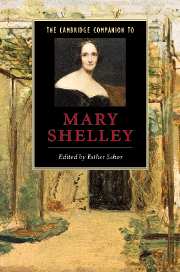Book contents
10 - Stories for the Keepsake
from Part 2 - Fictions and myths
Published online by Cambridge University Press: 28 May 2006
Summary
Mary Shelley's decision to start writing short stories for the literary annuals in the 1820s and 1830s is usually represented as discontinuous with her earlier career, part of the fall into commercialism and conservatism occasioned by Percy Shelley's death. Even those who have paid critical attention to the stories often denigrate them. Gregory O'Dea, for instance, writes: “For much of her later literary career, Mary Shelley was a hack writer . . . [She] filled the spaces between her increasingly disregarded novels by turning her pen to essays, reviews, bits of history and travelogue, and, what certainly marks her reduced circumstances, tales for The Keepsake.” One recent biographer calls these “insipid tales for ladies' annuals” “wordy and pedestrian.”
Yet it is important to remember that Mary Shelley always wrote for money. Any sharp distinction between what Shelley wrote for profit, and what she wrote inspired by a creative urge above Mammon would be false, although we may be able to distinguish the degree of financial pressure exerted on her various compositions. Indeed, her first short story, “Mounseer Nongtongpaw,” written when she was ten and a half, made a good profit for her father’s publishing company. Until her father-in-law’s death in 1844, Mary Shelley’s financial situation, throughout her early life, marriage, and most of her widowhood, was never comfortable.
- Type
- Chapter
- Information
- The Cambridge Companion to Mary Shelley , pp. 163 - 179Publisher: Cambridge University PressPrint publication year: 2003
- 4
- Cited by

